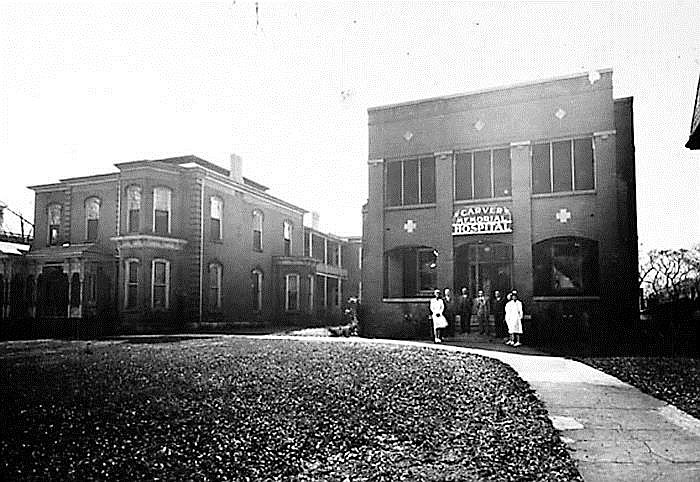Walden Hospital, the original African-American hospital in Chattanooga at Douglas and Eighth streets, opened in 1915. Founder Emma Wheeler added the nursing school and insurance plan in 1925. But by the end of World War II, improvements in surgical techniques, medications, laboratory testing and body imaging made the facility obsolete. In addition, its 30 beds failed to meet the needs of Chattanooga's growing black population. Walden Hospital closed in 1952.
In 1937, Erlanger Hospital, the largest white hospital in Chattanooga, was significantly expanded using public tax dollars. Black physicians had been promised a small number of private rooms and an operating room for their patients in the new addition. When the expansion was completed, this promise had not been kept.
In 1941, city leaders discussed a bond issue to further upgrade Erlanger Hospital. Black physician Perry A. Stephens commented:
"For more than 20 years, Negro physicians have sought to follow their patients into Erlanger Hospital, and to this day we are still denied this privilege During all these years, at every bond issue for some improvement at the hospital the money just 'ran out' when it came to make ready for the Negro physician."
Dr. Perry and his allies would have to wait over another 20 years to practice at Erlanger Hospital. However, in 1945, city and county governments gave "the Negro citizens of Chattanooga" the empty West Ellis Hospital, a 50-bed white hospital on West Ninth Street that opened around 1910 - a separate but far from equal hospital.
The refurbished facility was named Carver Memorial Hospital after black leader, Dr. George Washington Carver. It was one of the few municipally owned, tax-supported hospitals for blacks in the United States. The city, the county and Erlanger Hospital collectively contributed $80,000 in supplies and used equipment to the hospital.
When Carver Memorial Hospital opened in June 1947, it was fully accredited by the American College of Surgeons and the National Hospital Association. It had an operating room, laboratory, X-ray facilities and a maternity and nursery suite. There were 45 adult beds, five pediatric beds and 11 bassinettes.
Its black staff consisted of 18 physicians, 11 registered nurses, one laboratory supervisor, one X-ray technician, one chef and two office clerks. The staff was overseen by white hospital administrator Elmer Crozier.
The opening of the hospital created conflict between the local branch of the NAACP, which Dr. Stephens led, and the national office. The national NAACP opposed segregated hospitals even when that stance denied modern hospital facilities to local communities for the short term.
The closing of the Walden nursing education program in 1945 meant that most Carver nurses had to be recruited from schools at Grady Hospital in Atlanta or Tuskegee Institute in Alabama. The roster of registered nurses who worked at Carver Memorial when it opened in June 1947 included Mrs. R.P. Johnson (head nurse), Winifred Cambridge Taylor, Ethel Elston, Bernice Fonatine, Clara Harris, Estelle B. McCamy, Dolly Stuart and Lillian Wilson.
Dr. Stephens served as Carver's chief of staff. Other physicians at the hospital included Drs. N.B. Callier, J.G. Joyner, T.E. Taylor, Levi Patton and Lonnie Boaz. In addition to paid staff, "Grey Ladies" provided non-medical services such as writing letters for and reading to patients, and welcoming visitors at the information desk.
Carver Memorial Hospital offered its clientele the same pre-paid hospitalization program begun by Dr. Emma Wheeler at Walden Hospital. The first unit ready to accept patients was the obstetrical ward, and an expectant mother became the first patient at the new hospital. Fifty-five patients were admitted in the first six weeks.
In 1948, outpatient clinics opened for charity patients. The initial plans for Carver Memorial Hospital included a school of nursing, but that plan never came to fruition.
In 1962, about 15 years after it opened, Carver Memorial Hospital was demolished as part of Chattanooga's urban renewal efforts. Black patients and health care professionals were again left without adequate facilities. In anticipation of the demolition, Erlanger Hospital leaders began construction of a new "Negro Wing" in 1961.
Before construction was completed, the federal government under the Civil Rights Act of 1964 outlawed segregation in hospitals receiving federal funds. Hospitals and schools of nursing in Chattanooga were finally opened to all citizens.
Phoebe Pollitt, a public health nurse in Watauga County, N.C., for more than 20 years, teaches nursing at Appalachian State University in Boone, N.C. For more, visit Chattahistoricalassoc.org.
